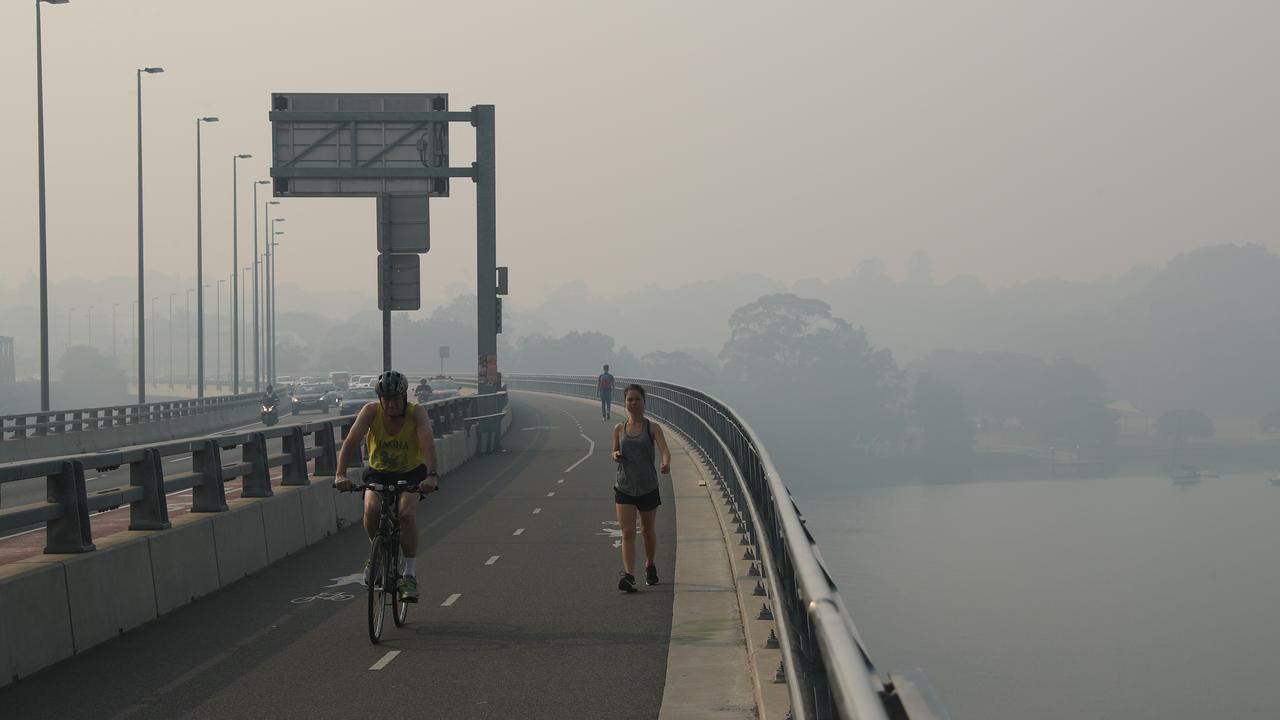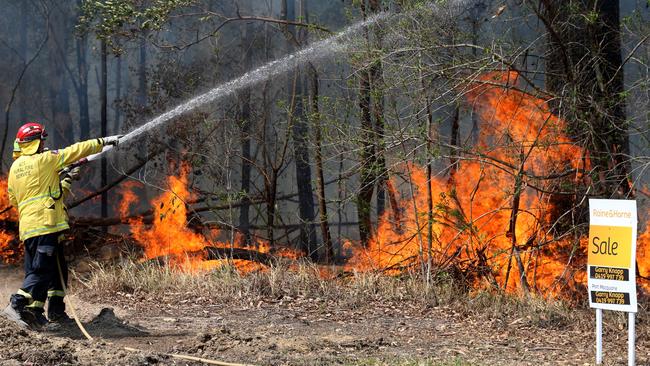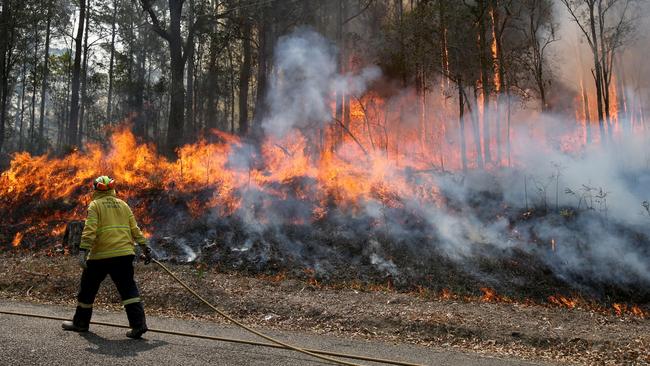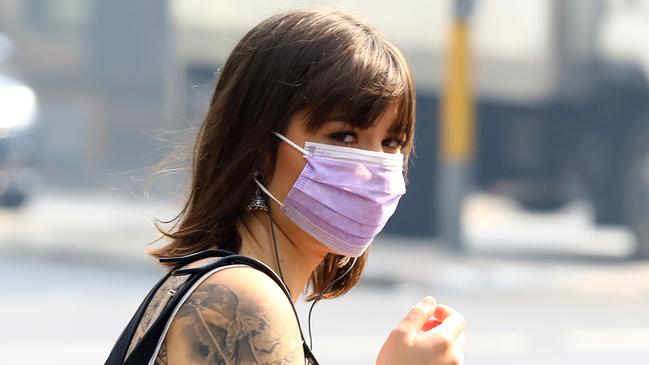Sydney smoke: NSW bushfires bring haze, poor air quality
Thick smoke has once again blanketed Sydney, reducing visibility and filling the air with an acrid stench, at the same time as wind and lightning forecasts threaten to send NSW’s bushfire crisis spiralling out of control again.
NSW
Don't miss out on the headlines from NSW. Followed categories will be added to My News.
A thick blanket of smoke has once again settled across parts of Sydney, with health warnings being issued for asthma sufferers and anyone with breathing difficulties.
For the second time this week smoke from bushfires burning in NSW’s north has covered the city, reducing visibility and filling the air with an acrid stench.
Sydney’s air quality on Tuesday was the worst in the world after smoke pushed the city’s levels to more than 20 times worse than Beijing and Jakarta.
“For most people, smoke causes mild symptoms like sore eyes, nose and throat,” NSW Health environment director Dr Richard Broome said.
However, people with conditions like asthma, emphysema and angina are more likely to be sensitive to the health effects of smoke.
“People with these conditions should avoid outdoor physical activity when there’s smoke around.”

Like earlier this week, the smoke covering the city comes from the Gospers Mountain fire burning in the Wollemi National Park in Hawkesbury. That fire has burned 164,101ha.
Jordan Notara, duty forecaster at the Bureau of Metereology, said the smoke haze would worsen this afternoon as north easterly winds dragged more smoke into the city.
The haze will continue to blanket the state tomorrow before clearing out in the afternoon with some showers.
“As we go towards tomorrow we will have a southerly change so there’s the potential for the haze during the early parts of tomorrow,” Mr Notara said.
The health warning comes at the same time as firefighting authorities issue warnings of their own for Thursday.

Hot winds and lightning strikes are forecast to sweep across NSW today, raising the risk of more devastating bushfire damage.
People living in bushfire zones have been urged to have their fire plans prepared and to know what to do if they come under threat.
More than 1000 firefighters remain in the field battling blazes, while other fire crews were at the ready.
“We’re expecting again widespread very high to severe conditions,” Rural Fire Service NSW Commissioner Shane Fitzsimmons said.
A Total Fire Ban has been declared for 12 areas tomorrow, Thursday 21 November 2019, due to forecast hot, dry and windy weather.
— NSW RFS (@NSWRFS) 20 November 2019
Now is the time to have a discussion with your family and know what you'll do if fire threatens. #nswrfs #nswfires pic.twitter.com/2wBRJO4uVI
Southern NSW would cop some of the worst conditions, he added, with a severe fire danger rating in place for 10 areas including Illawarra/Shoalhaven and the Southern Riverina.
“Now is the time to have a discussion with your family and know what you’ll do if fire threatens,” the RFS tweeted.
Wednesday’s cooler conditions brought some relief and most of the 50 fires burning across NSW were at Advice level (which is lower than Watch and Act, and Emergency levels) on Wednesday night, including Telegraph Point, north of Port Macquarie.

Of those, 24 fires remain uncontained, and alerts were elevated to Watch and Act for a near-20,000ha blaze at Ebor near Armidale, and at Myall Creek Rd in Bora Ridge.
The Rural Fire Service warned there will be “broad areas of very high and severe fire danger” on Thursday.
“We’ve got a long way to go yet,” Mr Fitzsimmons said, adding there were concerns that forecast possible thunderstorms at the weekend would bring little rain, but the risk of lightning strikes sparking fires.

